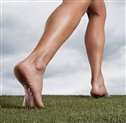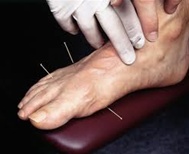
Diabetes Dental Care at Home
Diabetes Dental Care at Home
Diabetes Dental Care At Home
Diabetics are at risk of having dental problems because of their elevated blood sugar levels. High blood sugar levels add stress to the blood vessels and tissues of the body, causing them to weaken and sometimes even decay. High blood sugar levels also supply bacteria in the mouth with nourishment in the form of sugars and starches. Common complications that occur in the mouth include: less sensitive taste buds, weakened teeth, and infection in the gums.
Fighting off dental complications often makes Diabetes even harder to control. For example, if you have a gum infection, then the body will work overtime to fight the infection. Your blood sugar level and blood pressure level will rise as your body tries to fight the infection, causing trouble not only for your mouth, but also for the rest of your system.
Additionally, Diabetics often have less sensitive taste buds, which may cause them to seek foods that have a high potency of sugar so that they can taste the sugar. The desensitization of the taste buds may not even be noticeable.
- Dental complications associated with Diabetes include:
- ¥ Increased risk of gum disease
¥ Development of plaque Ð or the build-up of bacteria, saliva and food particles around the teeth
¥ Cavities
¥ Tooth decay or loss
¥ Dry mouth
¥ Oral infections
¥ Diminished sensitivity to sweets
¥ Tell your dentist that you have Diabetes
¥ Brush your teeth for 3 minutes twice a day
¥ Brush your tongue
¥ Floss daily
¥ Keep an eye out for signs of gum disease, such as swelling, bleeding and redness
Talk to your doctor or dentist immediately if you think you may be developing dental complications associated with Diabetes. Early treatment will help to make treatment more effective and may help to prevent the onset of related conditions.
Electric Tooth Brushes: Find the Right Brush
It is important for all people – especially those with Diabetes – to maintain proper oral health care by brushing regularly. According to most dentists, an electric tooth brush is just as affective, if not more so, than a manual tooth brush.
Using an electric tooth brush offers many benefits, including saved time. If you use an electric tooth brush properly, you’ll remove more plaque in less time than when brushing with a manual toothbrush. Plus, electric tooth brushes make brushing easy for those folks that have arthritis or other mobility problems.
Here’s what you need to consider in order to find the right electric toothbrush for you:
Price
Electric toothbrushes can vary a great deal in price, depending on the level of functionality and quality of the toothbrush. For example, a long-lasting and semi-professional toothbrush, such as the Sonicare Essence Toothbrush, will cost you right around $100. However, the Oral-B Vitality Dual Action Toothbrush will only cost you about $30. The difference in the two brands is simple: the Sonicare brush might last longer and provide more brushing options for you, however, the Oral-B toothbrush might suit your short-term budget more, especially if you are just trying electric brushes to see if you like them. Both offer comparable levels of quality.
Features
Every electric tooth brush comes with its own set of features. Common features include multiple vibration rates to suit your sensitivity level, brushing timers to make sure you brush for at least two minutes a day, and even battery life. Make sure that you are familiar with what options might be available to you when looking for electric tooth brushes.
You might also want to consider an oral care unit that comes complete with a water pick system, such as the WaterPik Personal Dental System, which helps you maintain healthy teeth and gums using low-pressure water streaming technology.
Type
When it comes to electric toothbrushes, there are many variations in terms of the type you can choose. For example, there are electric toothbrushes that will oscillate and vibrate, there are sonic electric brushes, and there are water jet systems. Each of these electric options offers different results.
For example, a water jet system will use a forceful jet of water to help remove plaque and build-up from the surface of your teeth and gums. Note: This water-based system may not remove plaque from deep within the pores of your teeth and should always be followed by brushing so that active ingredients in toothpaste can help to clean and protect your teeth.
Oscillating toothbrushes and sonic toothbrushes are quite similar in terms of results. However, some dentists believe that oscillating tooth brushes are more effective than sonic toothbrushes at removing plaque in a shorter amount of time.





Recent Comments